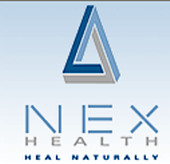Acupuncture
What is Acupuncture?
At first glance, the concept of Acupuncture seems peculiar, as its primary notoriety is the utilization of needles placed in the skin at various locations to relieve pain or affect other body functions.
From a scientific point of view, the effectiveness of acupuncture in certain diseases has been proven. How it works though, still remains a theory. It is believed that electromagnetic or physical stimulation of acupuncture points can have an affect on body function through the nervous system. Simply stated, acupuncture is a health science, which is used to successfully treat pain and other physiological dysfunction.
The Chinese Theory
Acupuncture has its roots in China. Early Chinese physicians discovered an energy network traversing just below the surface of the skin. According to Chinese theory this energy network communicates from the exterior to the internal organs and tissues at over 1000 "Acu-points" on the body. The energy works in harmony with all of the body's systems including: the circulatory, nervous, muscular, digestive, and genitourinary systems. When this vital energy becomes blocked or weakened, an effect in a body system or anatomic location becomes evident producing pain or other symptoms. Stimulation of one or a combination of key Acu-points located on the fourteen meridians on the body may restore harmony to the affected area.
The human body's energy flow courses over twelve meridians or channels that are normally well balanced. If a disruption of energy flow exists, it can alter the entire system. The main goal of Acupuncture's is to restore normalcy to the body's energy balance by stimulating a combination of Acu-points by a variety of means.
Is Treatment Painful?
One would assume inserting a needle into the skin would be painful, however the needles are so fine that four Acupuncture needles can easily be inserted into the hollow tube of a hypodermic needle. Because of the extreme slenderness of the needle most people compare the sensation to being "less than a mosquito bite". A phenomenon referred to as "CHI" occurs when the energy is contacted. This sensation is felt as a mild to moderate heaviness or tingling. Needles obviously still have their place in clinical practice. However, many practitioners certified in Acupuncture and licensed Acupuncturists are employing electronic and laser stimulation to the Acu-point with similar effectiveness as needling. Both of these procedures are painless and are quickly becoming standard worldwide.
How Many Treatments Are Usual?
Obviously the number of treatments varies with different conditions and is based o the individual case. Chronic issues generally require more treatment than acute conditions. Some patients notice an immediate improvement after the first treatment, whereas others may not notice any effect until the seventh or eighth visit. Most conditions that respond to acupuncture can be helped with 8 to 12 treatments.
What Conditions Are Treated?
Acupuncture textbooks list well over one hundred different conditions that respond well to Acupuncture. The World Health Organization working in close harmony with the International Acupuncture training centre of the Shanghai College of Traditional Chinese Medicine, has indicated Acupuncture as being especially effective in treating the following conditions:
•Headaches: migraine, tension, cluster and sinus headaches
•Acute and Chronic Pain Relief
•Bladder Dysfunction
•Cervical (Neck) Pain
•Low Back Pain and Sciatica
•Sprains and Strains
•Tennis Elbow
•Digestive concerns
•Anxiety
•Neurological Syndromes (i.e. Bell's Palsy)
•Trigeminal Neuralgia
•Bed Wetting
•Upper and lower back pain
•Osteoarthritis
•Frozen Shoulder
•Post-Operative Pain Relief
•Fatigue
•Menstrual Problems


